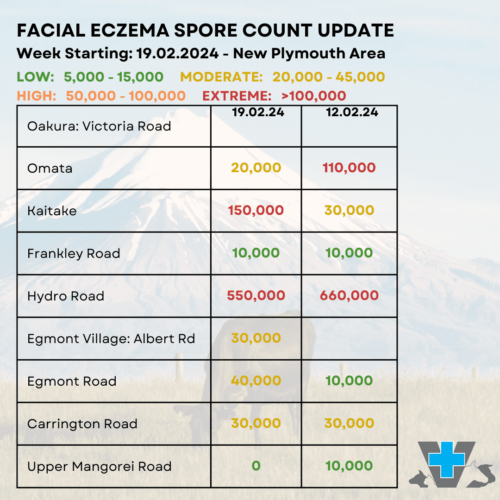
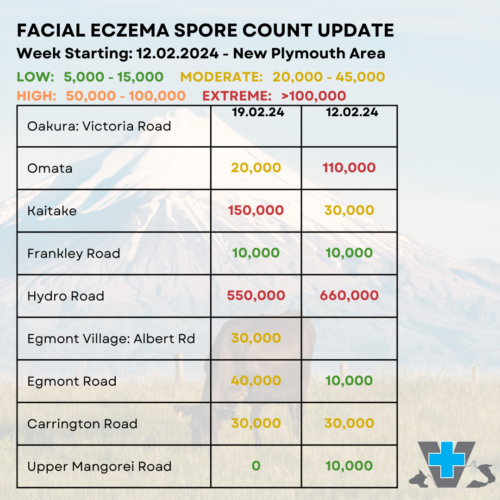
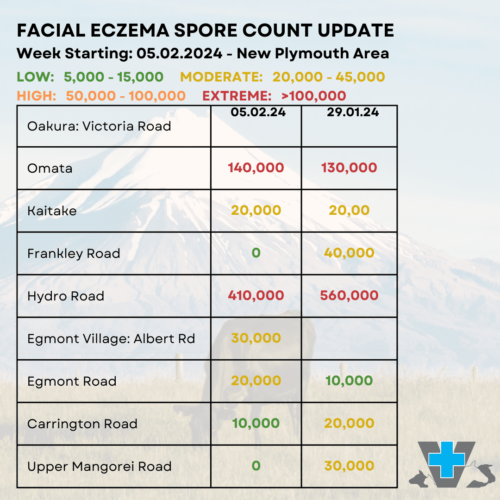
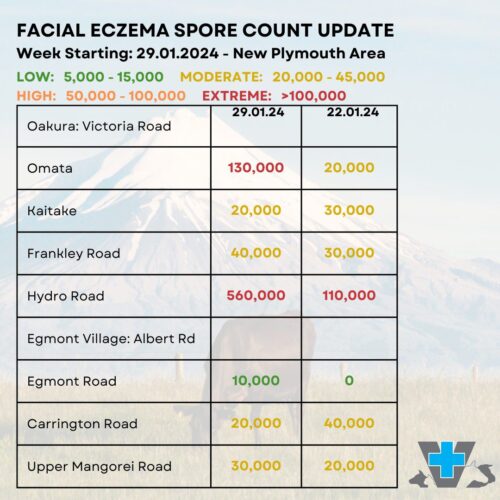
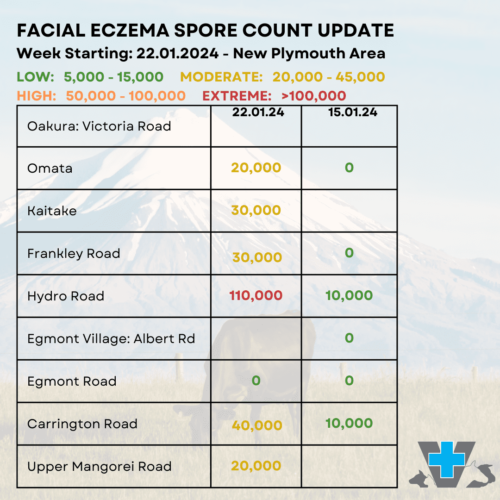
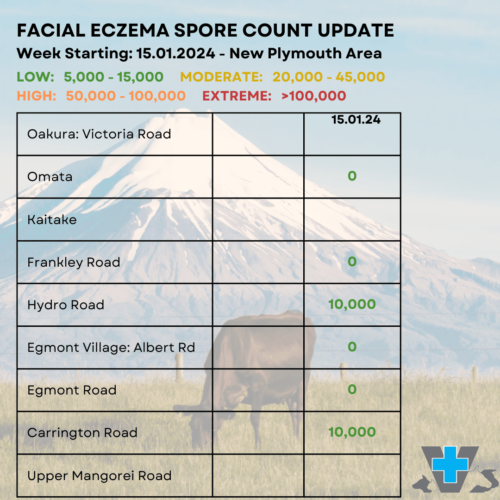
LOW: 5,000 – 15,000 MED: 20,000 – 45,000 HIGH: 50,000 – 100,000 EXT: >100,000
Disclaimer: These spore counts are indicative of the relative risk (based on the pastures tested throughout the week). Spore counts can vary considerably from paddock to paddock. When pasture spore counts are over 20,000/g and weather conditions look favourable for FE (Facial Eczema), monitor your own farms pasture spore counts and implement FE control and prevention strategies.
Facial eczema (FE) is a disease of grazing ruminants and camelids. It is caused via liver damage by a toxin produced in a fungal spore that grows in the dead “litter” at the pasture base.
The ideal growing conditions are warm and damp with high humidity – often following a dry spell. If you see mushrooms growing it is ideal FE conditions.
The toxin damages the liver so that is can no longer metabolise correctly resulting in a build-up of chlorophyll in the blood (the green colour in grass). This chlorophyll reacts with sunlight to cause a deep-seated sunburn that results in the characteristic eczema signs.
Signs to look for
- a drop in milk production
- cows are restless, seeking shade and lick their udder
- exposed unpigmented or thin skin reddens, thickens and peels
Not all animals affected with facial eczema show physical signs (i.e. clinical FE) although liver damage (i.e. subclinical FE) has occurred. It is estimated that for every clinical case there will be 10 cows with subclinical facial eczema.
Prevention
There is no cure for facial eczema, so prevention is the only way of protecting animals. To be effective, preventative measures need to be in place before eczema spores are found.
Preventative measures following monitoring pasture spore counts include dosing animals with zinc or spraying pastures with a fungicide.
